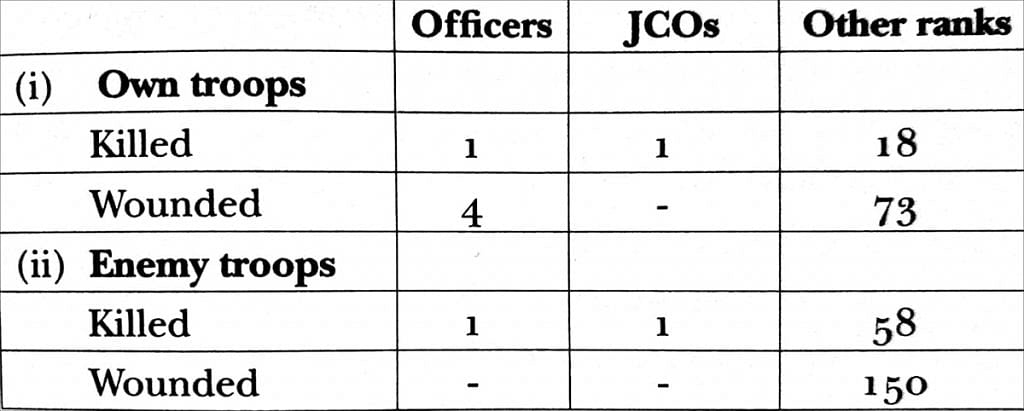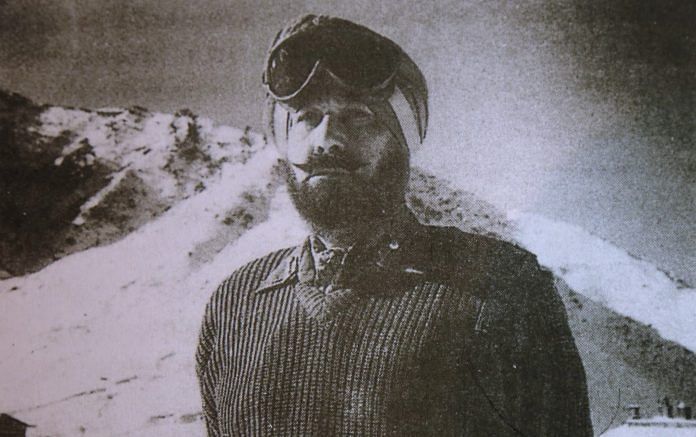Here’s an extract from the book War Despatches by the late Lt Gen. Harbakhsh Singh, who led the Western Command in the 1965 war.
While we celebrated one overnight surgical strike of two years ago, we must not forget an unparalleled surgical strike carried out by the Army in the run-up to the 1965 war with Pakistan when Lal Bahadur Shastri was prime minister. It is also a fitting tribute to him on his birth anniversary, 2 October.
The capture of Haji Pir pass in Pakistan-occupied Kashmir is a storied battle written about by many military historians, but who better than the all-time military great, the late Lt Gen. Harbakhsh Singh, who led the Western Command in the 1965 war.
This operation finds detailed mention in his book War Despatches, written clinically and factually, just like a soldier’s war diary.
There were many operations launched around the Haji Pir bulge, the main route for Pakistani infiltrators, beginning with Operation Faulad, which was to clear approaches to Haji Pir. The final operation, the assault on Haji Pir, which is widely described as India’s capture of its Golan Heights, was called Operation Bakshi.
(The following text is reproduced as it appears in the book)
Detailed conduct of ‘OP BAKSHI’
As it is considered unnecessary to go into the various actions (and they were numerous) which culminated in the capture of the HAJIPIR Pass and its subsequent consolidation, a brief description of only the main battles fought is given below:
(a) The SANK Approach
(i) 1 PARA commenced their attack on the SANK feature at 2130 hours on Night 26th/27th August. The climb was steep, made worse by incessant heavy rain. The battalion however pressed on relentlessly for it was a race against time: to achieve surprise the troops had to reach the top before first light. Despite the difficulties of terrain and weather the unit reached the peak at 0415 hours. The enemy was taken completely unawares and fled in panic, leaving behind two medium machine guns and three light machine guns.
(ii) Exploiting their success, the battalion rushed on to the next feature, SAR which was captured by 0930 hours 27th August. Two hours later the unit added LEDIWALI GALI to their list of successes that day. By 1800 hours all areas up to and inclusive of LEDIWALI GALI was secured. Own casualties in this action was 21 wounded. The enemy losses were 10 other ranks killed, 40 wounded and one taken prisoner.
(iii) At this stage Major RANJIT SINGH DAYAL (now Lieut Colonel) the hero of this operation sought permission to strike for the HAJIPIR Pass. The permission was given and the march began. The approach involved a climb of over 4000 feet and it had to be done during the hours of darkness. A continuous heavy rain made the hill-side slushy and slippery. But 1 PARA defying physical exhaustion continued to scramble up doggedly, often on all fours and reached the vicinity of the pass by 0800 hours on 28th August. The much sought after objective was in sight and after a brief pause the battalion stormed the pass. The enemy fled in confusion. By 1030 hours 28 August 1 PARA was in complete control of the objective.
(iv) The enemy mounted a furious counter-attack on 29th August in a desperate bid to recapture this prestige area. The attack was repulsed. To consolidate their positions the battalion captured RING CONTOUR NR 0993 on 30 August and point 8766 NR 1191 a day later. Major (now Lieut Colonel) RS DAYAL who had so ably led his troops in a series of brilliant actions culminating in the capture of the Pass, was awarded the MVC.
(b) The BEDORI Approach
While 1 PARA was struggling up the SANK Approach, 19 PUNJAB after securing RING CONTOUR NM 1903 and PATHRA, were pitching themselves against the formidable BEDORI feature. The battalion made a determined assault on the position but the defenders held on tenaciously to their ground and flung the Punjabis back to their firm base. 7 BIHAR were next called in to attack the post but the feature once again defied capture. An attempt by 4 RAJPUT from the NORTH on 27 August was also foiled. Officer Commanding 19 PUNJAB then volunteered to make another try. Incensed by their previous failure the Punjabis stormed the feature from the SOUTH and this time nothing could stop them. BEDORI and KUTHNAR DI GALI NR 1799 both fell on 28th August 1965.
(c) The battle of BISALI NR 0596
With the capture of BEDORI feature, the EASTERN flank of the HAJIPIR Pass Area was secured. The WESTERN flank, however still remained exposed and vulnerable. It was, therefore decided to capture the BISALI position for ensuring the security of the HAJIPIR Pass from that direction. 4 RAJPUT detailed to capture BISALI attacked the post on Night 4th/5th September and by 0400 hours 5th September were in possession of the objective. The enemy however, launched three vicious counter attacks the last of which proved too strong for Rajputs and the battalion withdrew to SANK. Own casualties were two officers and 63 other ranks killed and four officers and 47 other ranks wounded. After this change of hands, the feature remained with the enemy.
(d) In comparatively minor actions, 6 BIHAR captured MEHNDI GALI on 26th August and JARNI GALI three days later, on 29th August 1965.
Consolidation of position
To consolidate the brigade defences the following actions were taken:
(a) 1 PARA was given the task of capturing RING CONTOUR NR 1191 on Night 7th/ 8th September. The battalion made four attempts on the feature without any success.
(b) 6 DOGRA capture Point 7720 NR 1591 on 9th September 1965. On the same day, 19 PUNJAB secured Point 9270 NR 1893 at 1000 hours and ZIARAT NR 1888 at 1700 hours.
(c) A composite force of eight platoons from 6 and 7 BIHAR raided HILLAN NR 2994 on Night 13th /14th September. Own troops came under heavy machine gun and rifle fire. The enemy however fled when fire was returned.
(d) 6 DOGRA and one company 19 PUNJAB captured GITIAN NR 1288 at 1000 hours on 21st September. The enemy launched a number of counter attacks, all of which were repulsed. Casualties were:

(e) 19 PUNJAB made several attempts without success to capture Point 8777 NR 0129. Two officers and 11 other ranks were killed during these actions.
 This extract is from the book ‘War Despaches: Indo-Pak Conflict 1965’ by Lt Gen. Harbakhsh Singh. It was published by Lancer International in 2011.
This extract is from the book ‘War Despaches: Indo-Pak Conflict 1965’ by Lt Gen. Harbakhsh Singh. It was published by Lancer International in 2011.



